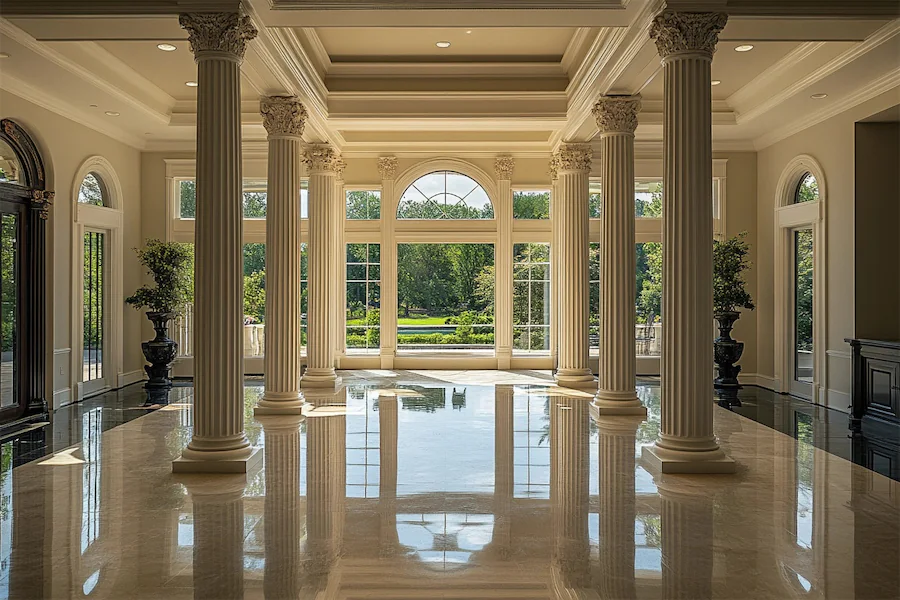Neoclassical columns are a defining feature of Neoclassical architecture, which emerged in the mid-18th century as a revival of classical Greek and Roman design principles. This architectural style emphasizes grandeur, simplicity, and symmetry, often incorporating columns to convey a sense of timeless elegance.
History and Origins of Neoclassical Columns
The Neoclassical movement arose as a reaction against the ornate and elaborate Baroque and Rococo styles, seeking to return to the perceived purity and rationality of ancient classical architecture. Architects drew inspiration from archaeological discoveries and classical texts, leading to the widespread adoption of elements such as columns, domes, and pediments.
Key Features of Neoclassical Columns
Neoclassical architecture prominently features columns that are often modeled after the three classical orders:
- Doric: Characterized by their simplicity and strength, Doric columns have plain capitals and fluted shafts. They convey a sense of solidity and were commonly used in Neoclassical designs.
- Ionic: Recognized by the volutes (scroll-like ornaments) on their capitals, Ionic columns are more slender and elegant. They add a touch of sophistication to Neoclassical structures.
- Corinthian: The most ornate of the classical orders, Corinthian columns feature capitals adorned with acanthus leaves. They were used to impart grandeur and decorative richness.
In Neoclassical architecture, columns are not merely structural elements but also serve as visual focal points, contributing to the overall harmony and balance of the design. They are often employed in porticos, colonnades, and facades to create a commanding presence.
Applications of Neoclassical Columns
Neoclassical columns have been utilized in various significant structures:
- The White House: Located in Washington, D.C., the White House features a prominent portico supported by Ionic columns, exemplifying the Neoclassical emphasis on symmetry and grandeur.
- The British Museum: Situated in London, this iconic building showcases a grand façade with towering columns, reflecting the Neoclassical admiration for ancient Greek and Roman architecture.
- The Panthéon: In Paris, the Panthéon features a façade with Corinthian columns, embodying the Neoclassical ideals of harmony and proportion.
Considerations When Choosing Neoclassical Columns
When incorporating Neoclassical columns into architectural designs, consider the following:
- Material Selection: Traditional materials include stone and marble, which convey authenticity and durability. However, modern constructions may utilize reinforced concrete or composite materials for cost-effectiveness and ease of maintenance.
- Proportions and Scale: Adhering to classical proportions is essential to achieve the desired aesthetic. The size and spacing of columns should be carefully planned to maintain balance and harmony within the structure.
- Ornamentation: While Neoclassical architecture favors simplicity, the choice of column order (Doric, Ionic, or Corinthian) will determine the level of decorative detail appropriate for the design.
Conclusion
Neoclassical columns are emblematic of a return to classical ideals in architecture, emphasizing simplicity, symmetry, and grandeur. Their enduring appeal continues to influence architectural designs, offering a timeless connection to the principles of ancient Greek and Roman aesthetics.
